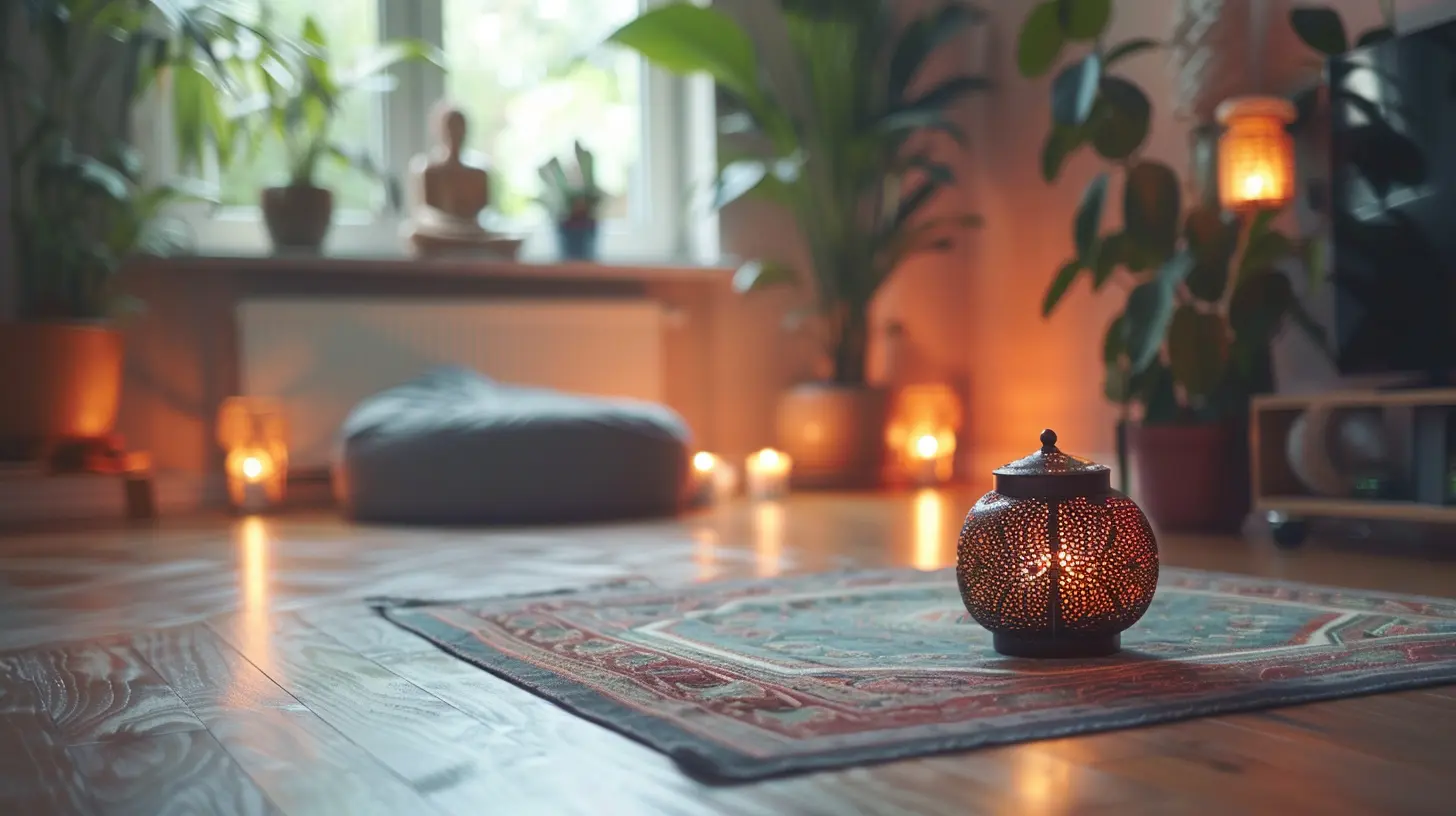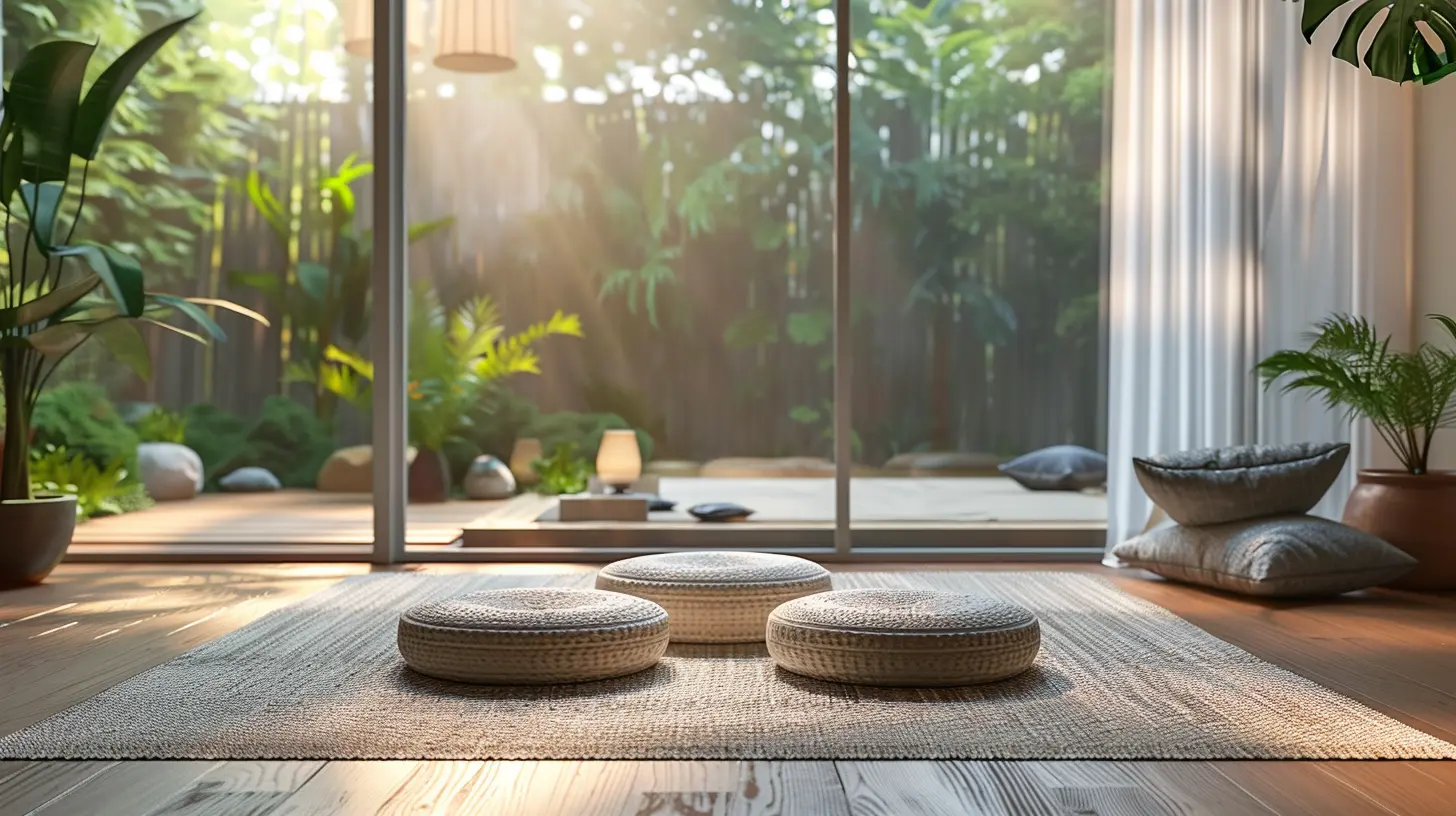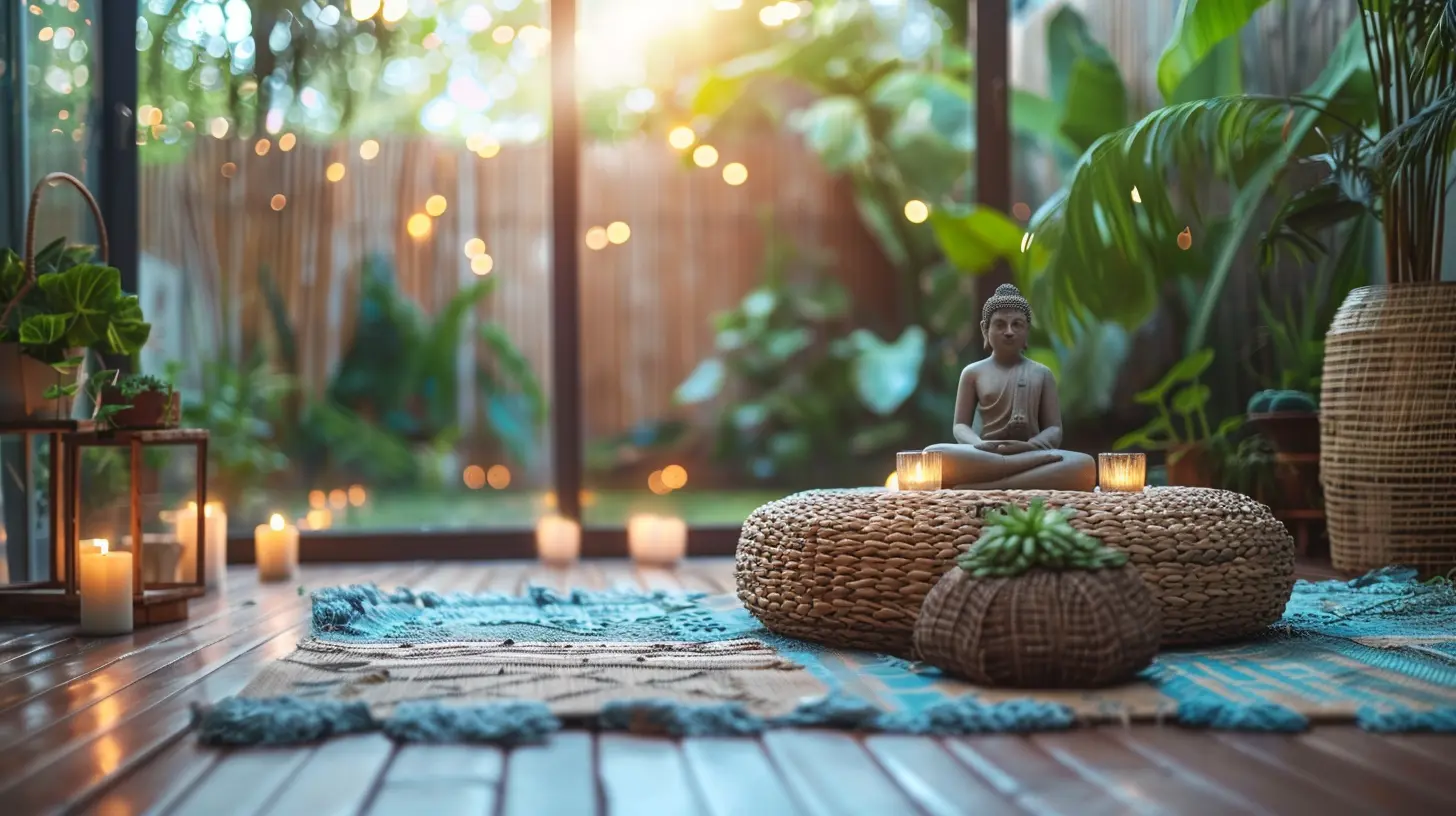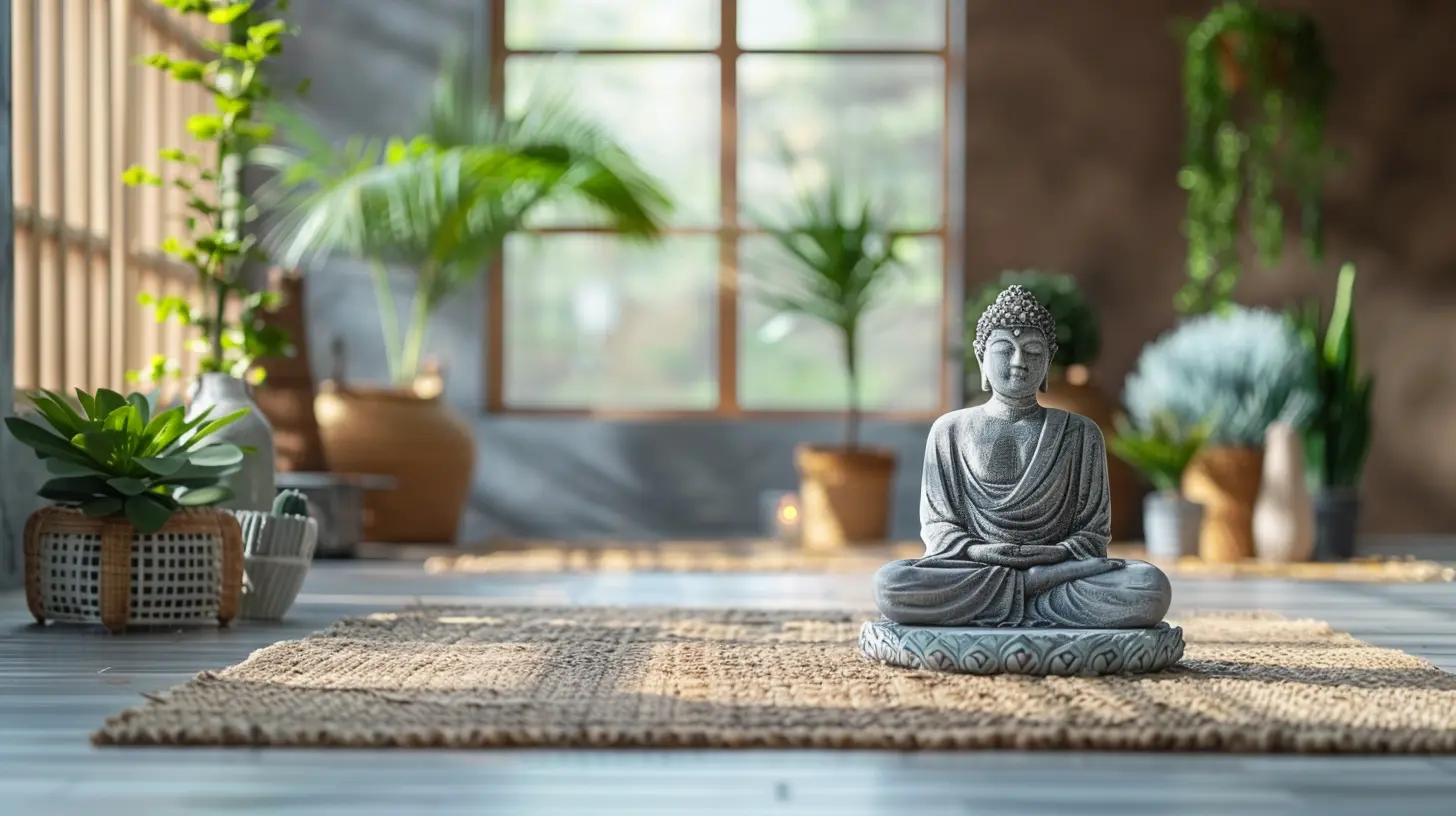How to Create a Peaceful Meditation Space in Your Home
28 October 2025
In today’s fast-paced world, finding a quiet retreat in your own home can be a game-changer for your mental well-being. Whether you're a seasoned meditator or just starting, having a dedicated meditation space can help you relax, focus, and reconnect with yourself.
So, how do you create the perfect meditation spot? Let's dive in!

Why You Need a Meditation Space
Think about it—when you sit down to meditate in a cluttered, noisy, or uncomfortable area, how do you feel? Probably distracted, unsettled, or even frustrated. Having a dedicated meditation space helps signal to your brain that it's time to unwind.A well-designed meditation corner isn't just a luxury—it's a necessity for anyone looking to cultivate mindfulness and inner peace.

Choosing the Right Spot
1. Find a Quiet Area
The first step? Choose a place with minimal distractions. A quiet corner of your bedroom, a secluded nook in your living room, or even a walk-in closet can work wonders. If you live with others, try to pick a spot where interruptions are least likely.2. Consider Natural Light
Sunlight has a calming effect on the mind. If possible, set up your meditation space near a window where natural light can filter in. However, if bright light is too stimulating for you, soft artificial lighting or candles can create a soothing ambiance.3. Pick a Comfortable Spot
Meditation isn't just about sitting cross-legged on the floor. If you’re more comfortable on a chair, bench, or cushion, listen to your body! Your meditation space should feel inviting and relaxing.
Decluttering for a Clear Mind
Ever heard the phrase, “A cluttered space leads to a cluttered mind”? Well, it’s true! Too much clutter can make it harder to focus and relax.1. Clear Out Unnecessary Items
Keep your meditation area minimalistic. Store away any items that don’t serve a purpose in your practice. The fewer distractions, the better.2. Organize Mindfully
If you like to have a few personal items—like a journal, crystals, or incense—make sure they’re neatly arranged. A clean, organized space promotes mental clarity.
Adding Essential Elements
Now that you’ve got the basics covered, it’s time to personalize your meditation haven.1. Comfortable Seating
Invest in a good meditation cushion or yoga mat. If sitting on the floor isn’t comfortable for you, a supportive chair is perfectly fine.2. Soft Textures
Incorporate blankets, soft rugs, or plush cushions. The goal is to create a space that feels warm and inviting.3. Calming Scents
Scent plays a huge role in relaxation. Try burning incense, diffusing essential oils like lavender or sandalwood, or lighting a scented candle.4. Sounds That Soothe
Some people prefer complete silence, while others find soft background sounds helpful. Experiment with:- Meditation music
- Nature sounds (ocean waves, birds chirping, rain)
- Singing bowls or chimes
5. Personal Touches
Your meditation space should feel sacred to you. Consider adding:- Plants – Bring in greenery for a fresh, peaceful vibe.
- Art or Symbols – Hang up calming artwork, a vision board, or spiritual symbols that inspire you.
- Affirmations – Place cards with uplifting quotes to keep your mindset positive.
Setting the Mood
1. Optimal Lighting
Avoid harsh overhead lights. Use dimmable lamps, salt lamps, or fairy lights for a cozy glow.2. Temperature Control
If you tend to feel cold, keep a soft blanket nearby. Too hot? Use a small fan to keep the air flowing.3. Time It Right
Try meditating at the same time each day to build a habit. Morning meditations set a peaceful tone for the day, while evening sessions help unwind the mind before bed.
Keeping Your Space Sacred
Your meditation corner should remain a peaceful sanctuary, not just another part of your home.1. Set Boundaries
Let your family or housemates know that this space is for quiet moments. If possible, keep pets or distractions out when you’re meditating.2. Keep It Clean
Dust, clutter, or disorganized items can disrupt your calm. Take a few minutes daily to tidy up your space.3. Use It Regularly
The more you use your meditation space, the more it will become associated with relaxation. Even if you’re not meditating, sitting in your space for a few quiet moments can help center your mind.Troubleshooting Common Issues
1. Noisy Environment
If outside noise is an issue, consider:- Noise-canceling headphones
- White noise machines
- Playing gentle background music
2. Small Space Limitations
Live in a tiny apartment? No worries! You don't need a whole room—just a small, dedicated corner. Foldable cushions and compact decor can make the most of limited space.3. Struggling to Focus
Sometimes, even with the perfect setup, your mind may wander. That’s okay! Meditation is a practice, not perfection. If you struggle with focus:- Try guided meditations
- Use a timer to ease into your practice
- Start with just 5 minutes a day and build up
Final Thoughts
Creating a peaceful meditation space in your home doesn’t have to be complicated. With some thoughtful choices and personal touches, you can craft a sanctuary that invites relaxation, mindfulness, and inner peace.Remember, it’s not about how fancy or elaborate your space looks—it’s about how it makes you feel. So start small, customize it to your liking, and enjoy the serenity that comes with having your own meditation retreat!
all images in this post were generated using AI tools
Category:
MeditationAuthor:

Sophia Wyatt
Discussion
rate this article
1 comments
Sophia McGivern
Creating a peaceful meditation space is like crafting a cozy corner for your mind! Just a few personal touches—a comfy cushion, calming scents, and soft lighting—can transform a simple nook into a serene sanctuary. Embrace the journey to tranquility; your mind will thank you! 🌿✨
November 8, 2025 at 5:18 PM

Sophia Wyatt
Thank you for your lovely insight! Personal touches truly elevate a meditation space, making it a true sanctuary for the mind. 🌼✨


